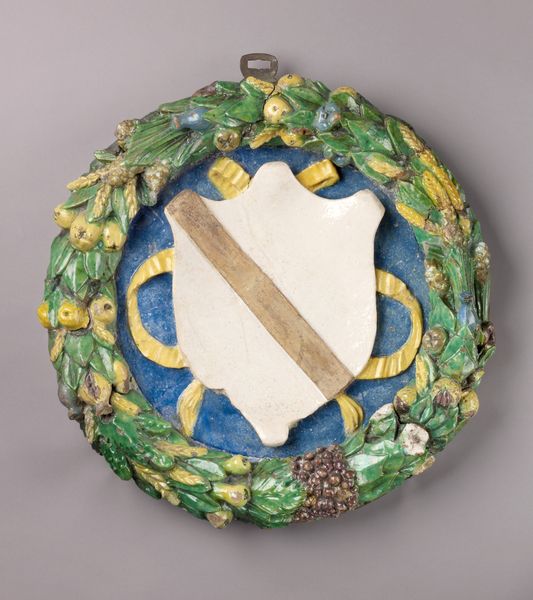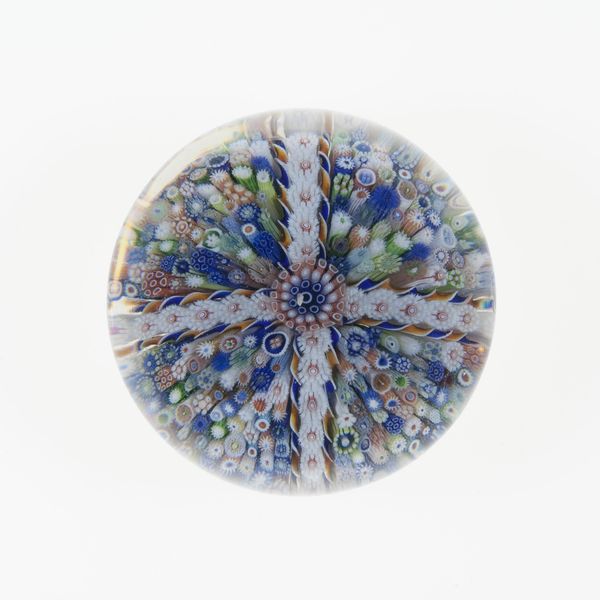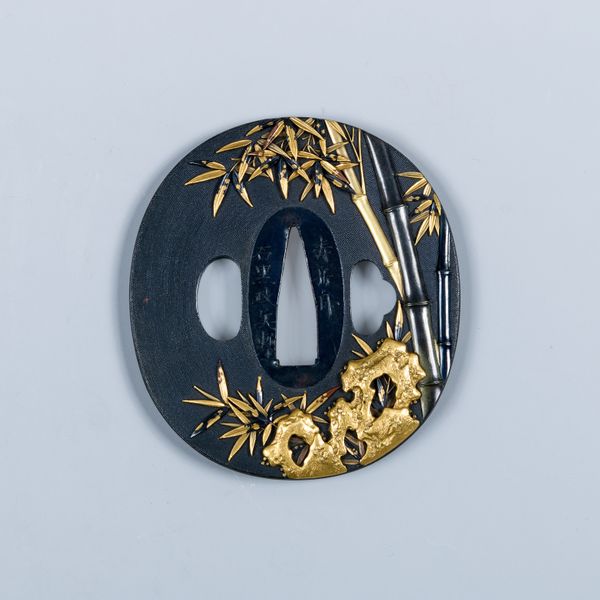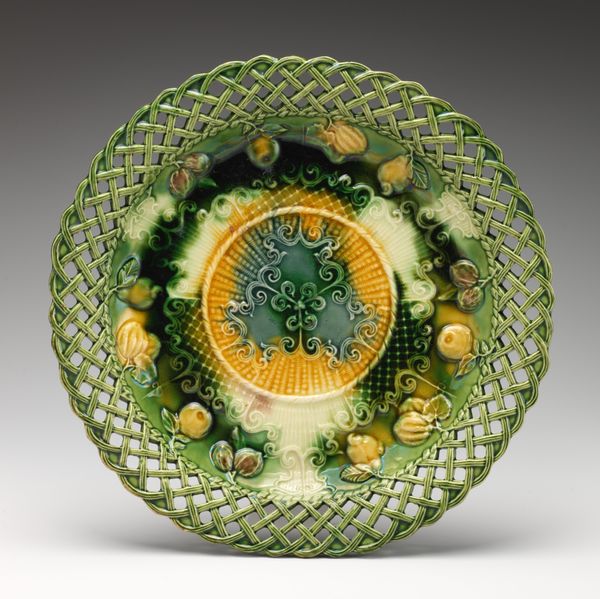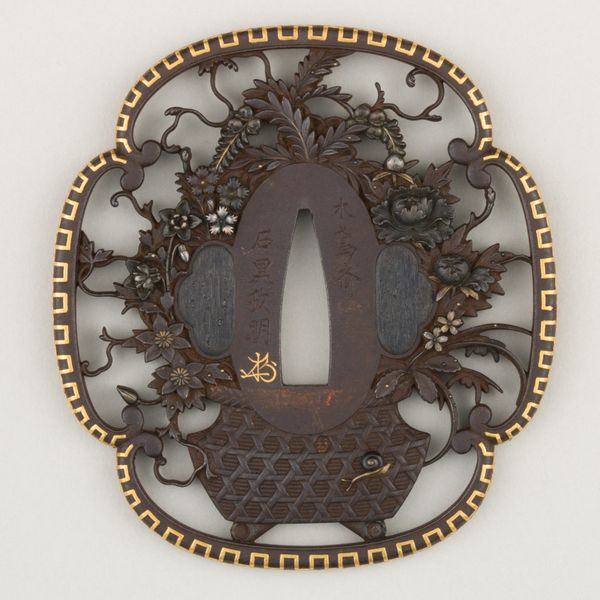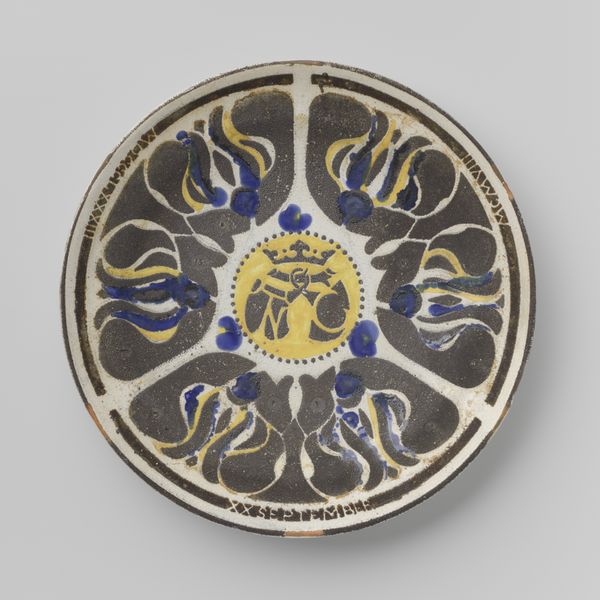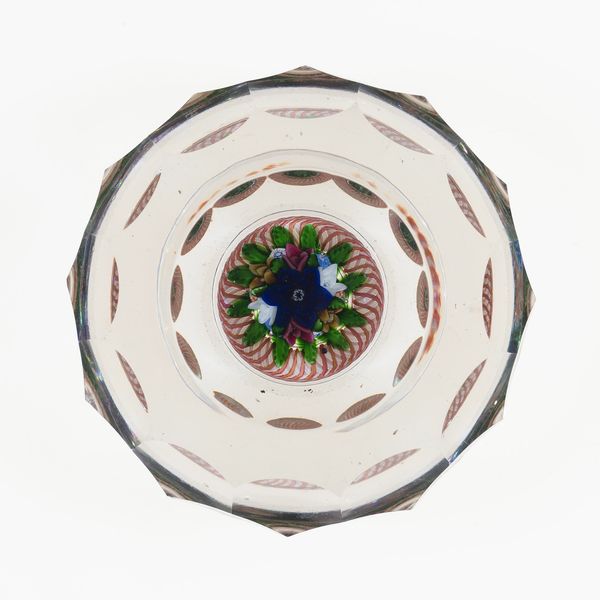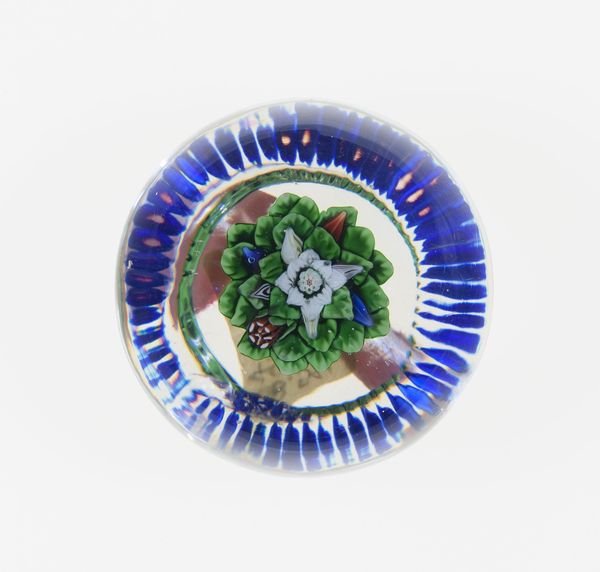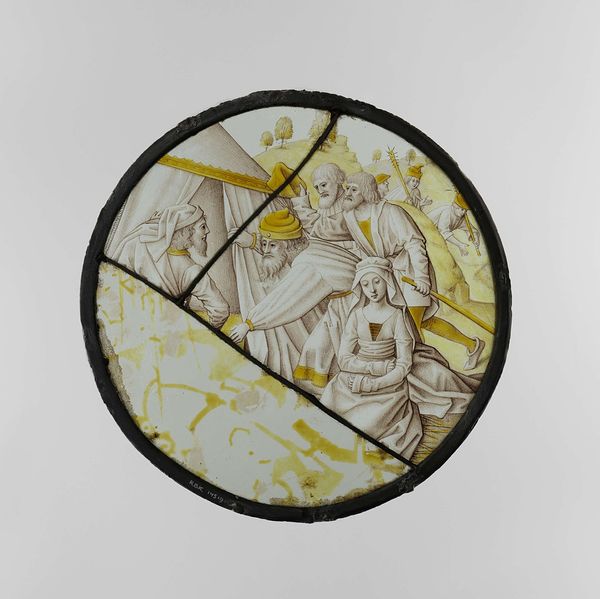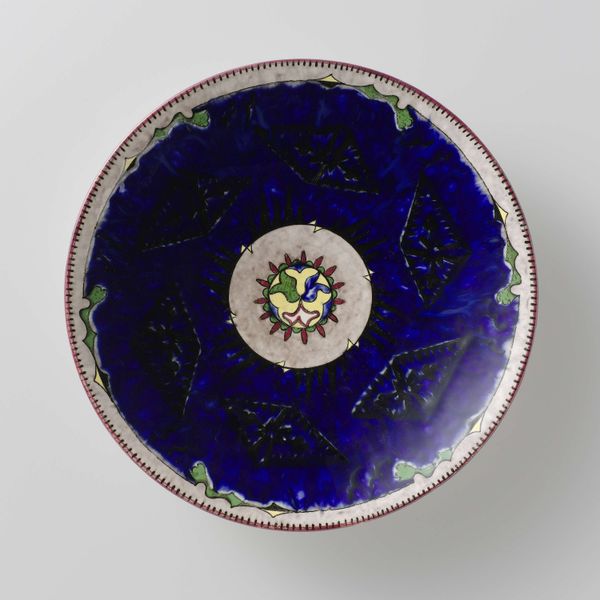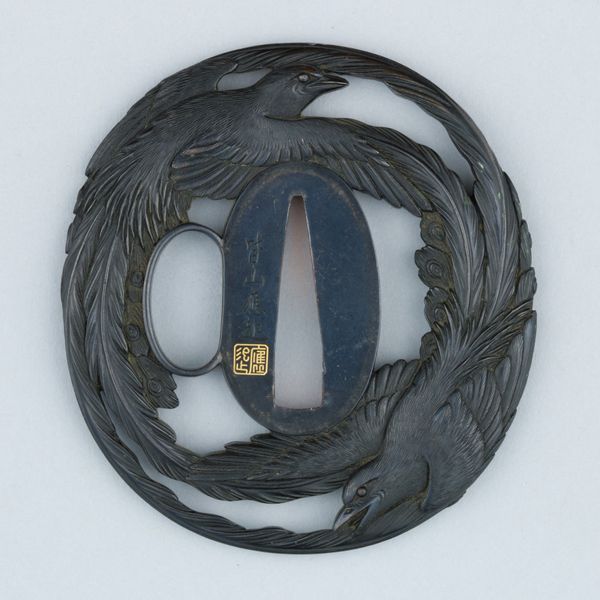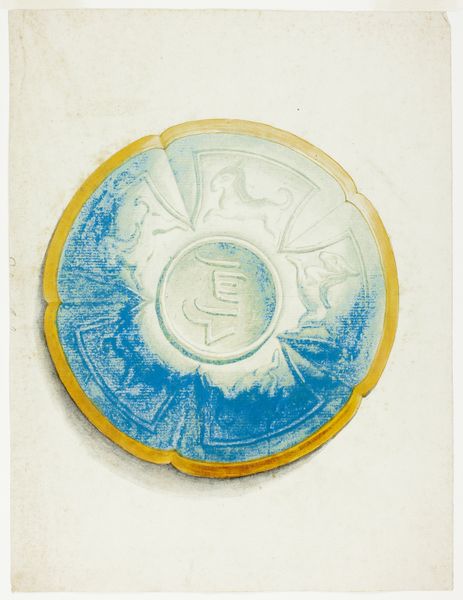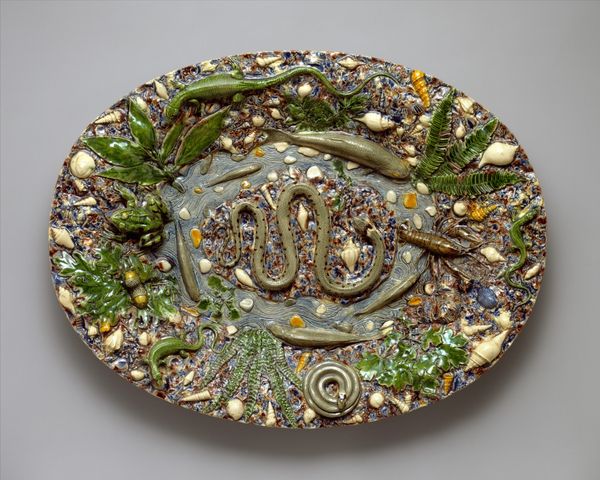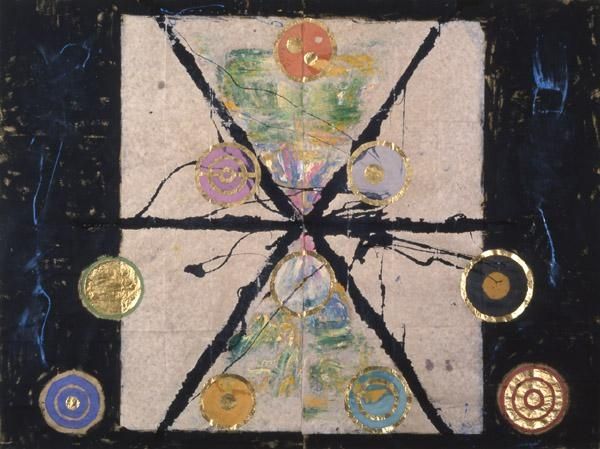
sculpture
#
medieval
#
11_renaissance
#
fruit
#
sculpture
#
decorative-art
#
italian-renaissance
Dimensions: wt. confirmed: 22 1/2 × 22 1/2 in., 38 lb. (57.2 × 57.2 cm, 17.2 kg)
Copyright: Public Domain
Curator: Welcome. We are standing before the Minerbetti coat of arms. It's attributed to the Della Robbia workshop and dates from 1505 to 1515, a remarkable example of Italian Renaissance decorative arts rendered in glazed terracotta. Editor: It's so striking! There is an immediate sense of solemnity, broken somewhat by this very playful wreath of foliage. I feel as though the fruit, framing that stern heraldry, hints at a family's prosperity. Curator: Precisely. If we deconstruct it, we observe a central shield bisected vertically, presenting two distinct heraldic fields, unified by their enclosure within a deeply ornamented roundel. Editor: Absolutely. Note also the strategic employment of specific colours—the bold, unyielding ultramarine, the sunny yellows— likely carried symbolic meaning connected with the Minerbetti family. Curator: Indeed. And the symmetrical arrangement of the coat of arms against the naturalism of the fruit wreath creates a tension between artifice and nature. This push and pull speaks volumes to period aesthetics and notions of familial representation. The division of heraldic colors and symbols further offers a glimpse into alliance and lineage. Editor: But wouldn't you agree that these representations always reify existing structures of power? Coats of arms function to reinforce patriarchal lines and signal exclusion; it makes me wonder how we can reconcile our aesthetic admiration for such works, with the underlying historical realities they represent. Curator: An excellent point. Looking closer at the medium of terracotta, the glaze enlivens what might be a weighty piece, introducing an appealing quality while preserving its dignity. Editor: A dignity perhaps born from solidifying its presence at a precise time within its specific political and social landscape. We're also confronted with what has persisted. A testament to enduring identity... for whom? Curator: Its preservation allows a dialogue between generations. An intriguing synthesis of craftsmanship, symbolism and power, its visual language is clear and historically dense. Editor: And invites questions of power and position. Standing before it, one can acknowledge artistry but also contemplate what heraldry means.
Comments
No comments
Be the first to comment and join the conversation on the ultimate creative platform.
